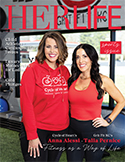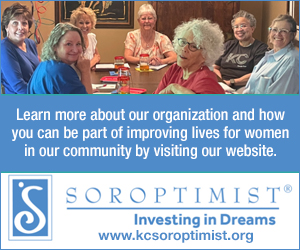 Lauren Frisch Pusateri
Lauren Frisch Pusateri
Spotlight on Midlife Wellness
Dr. Brenda Smith:
Tips for Breast Cancer Prevention
As a woman, a mother of two daughters and a physician who treats only women, Dr. Brenda Smith, board-certified OB/GYN, has an intense interest in fighting breast cancer.
She notes that the majority of women who develop breast cancer have no family history of the disease. “The informal statistic that has made the biggest impression on me is that it seems we all know someone impacted by breast cancer,” stated Dr. Smith. “Even though we’re aware of breast cancer, most women don’t understand what they can do to reduce their risk of this dreaded disease.”
RISK FACTORS ARE INTERCONNECTED.
Dr. Smith has counseled women for many years with expertise in hormonal systems, nutrition, metabolism, brain neurotransmitters, immune and preventative health. She opened the Midlife Wellness Center in 2005 to provide the time and individual attention needed for women at midlife. Dr. Smith says that damaging your cellular DNA, constantly stimulating cells to divide and depressing the immune system are conditions conducive to cancer. For women there are four primary risk factors for breast cancer: genetic, hormonal, nutritional and environmental.
“The body is complex and interconnected, so all of these risk factors overlap and can influence each other,” she revealed. “You may have a genetic risk, but if you control the other factors, your overall risk can be diminished.” She offers the following guidelines to help you increase your awareness of breast cancer and increase your odds of preventing it.
Arm yourself with the facts to identify your risk factors.
“Don’t just stand in line for a mammogram once a year. You want to have a plan for prevention, so start gathering information,” advised Dr. Smith. “Read What Your Doctor May Not Tell You about Breast Cancer by John R. Lee, MD, David Zava, PhD and Virginia Hopkins, and go to bcpinstitute.org and breastcancer.org to learn the risks.”
Discuss your risks and your prevention plan with a health care provider.
Knowing how to conduct a breast self-exam is critical to your healthcare strategy. In addition, talk with your provider about when to begin breast screening and how often to have screenings, and then determine which type is best for your body–mammograms, ultrasounds, thermography or MRIs.
Seek genetic counseling if you are high risk.
All women need a breast cancer prevention plan, but for women who have a family history of breast cancer, the stakes can be even higher. If you have a family history of breast cancer, get counseling at a specialized center to learn how to best manage your risks.
Realize that hormone imbalance can be a breast cancer risk.
Hormone imbalance is not just inconvenient. Suspect hormone imbalance if you’re having symptoms such as breast tenderness, heavy cycles or severe PMS. This could indicate estrogen dominance, which increases your risk of breast cancer. “I would also advise you not to ‘dabble’ in hormone therapy,” she stated. “Hormones are powerful messengers in the body and should be used wisely. If you need hormone therapy, get advice from someone who’s knowledgeable and has actual clinical experience using hormones. Some hormone therapies elevate risk while others can reduce it.”
Nutrition is a powerful tool to lower risk.
Being overweight and consuming alcohol increase your risk of breast cancer. Also, choose meat and dairy products with no added hormones. Use soy only in moderation from natural food sources and increase your consumption of cruciferous vegetables and flaxseed.
Reduce exposure to toxic chemicals.
Evaluate your environment for substances threatening the balance of your body and reduce your exposure to them. Chemicals often increase cellular damage, lead to hormone imbalance and depress the immune system. Women should reduce their exposure to the chemicals applied to their bodies. Choose safer bath and beauty products such as those on safecosmetics.org. Strive to reduce your exposure to pesticides by avoiding the “dirty dozen” fruits and vegetables from ewg.org. Avoid storing or heating food in plastic containers because chemicals can leach into foods and mimic estrogens in the body.
Exercise your body and mind.
When you exercise, blood is pumped into tissues, delivering nutrients and taking toxins away. The lymph tissue is pumped by the muscles to expel the toxins it has collected; and energy is channeled through your body.
Limit other exposures.
Reduce your exposure to radiation during medical test such as mammograms, X-rays, CT scans and PET scans.
Spread the Word.
“Let’s be the last generation that willingly accepts toxins into our bodies,” stated Dr. Smith. “Let’s be the last generation that’s ill-informed about our bodies and how they function. If you learn something, pass it on to the other women around you.” HLM
Midlife Wellness Center is located at 1201 N.W. Briarcliff Parkway, Suite 300, Kansas City, Missouri. See the website at midlifewellnesscenter.com or call 816 587-7979.









